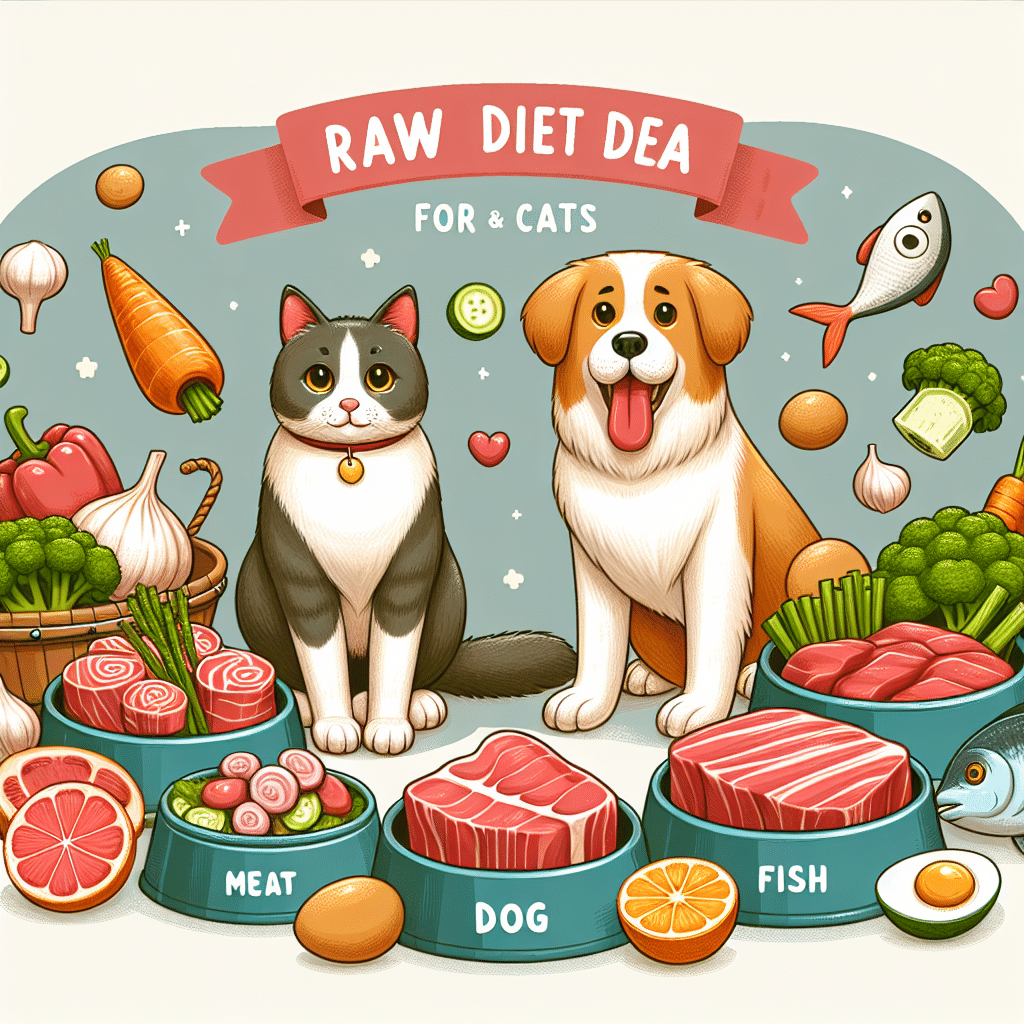Nourishing Raw Diet Ideas for Dogs and Cats
Understanding Raw Diets
Raw diets for pets typically consist of uncooked meat, bones, fruits, vegetables, and organ meats. The basic premise is to mimic what a pet’s ancestors would have eaten in the wild. Proponents argue that raw diets can promote better digestion, healthier coats, improved energy levels, and reduced allergies.
Benefits of Raw Diets
- Better Digestion: Raw diets allow pets to better assimilate nutrients due to the availability of natural enzymes and beneficial bacteria.
- Healthier Skin and Coat: A diet high in omega-3 and omega-6 fatty acids can lead to a shinier coat and healthier skin.
- Improved Dental Health: Chewing raw bones can naturally clean teeth and gums, reducing plaque buildup.
- Weight Management: Because raw diets often contain fewer fillers like grains, pets may find it easier to maintain a healthy weight.
Key Components of a Raw Diet
-
Protein Sources: Animal-based proteins are crucial as they contain essential amino acids. These can include beef, chicken, turkey, rabbit, lamb, and fish.
-
Organ Meats: Liver and other organs are nutrient-dense and provide essential vitamins and minerals.
-
Bone Content: Raw meaty bones (RMBs) can aid in dental health and provide calcium. Example bones include chicken necks and beef ribs.
-
Fruits and Vegetables: While dogs are omnivores and cats are obligate carnivores, adding small amounts of fruits and vegetables can provide fiber, vitamins, and antioxidants.
-
Supplements: Depending on the composition of the diet, supplements such as fish oil, probiotics, and vitamins may be necessary for overall health.
Nutritional Guidelines for Dogs
-
Chicken Thighs with Vegetables
- Protein: Chicken thighs (boneless if your dog isn’t used to chewing bones)
- Vegetables: Spinach, carrots, and pumpkin (pureed)
- Benefits: Provides protein, fiber, and essential nutrients that nourish and support gut health.
-
Fish and Sweet Potato Bowl
- Protein: Salmon or mackerel (skin-on for omega fatty acids)
- Vegetables: Cooked sweet potatoes
- Benefits: Rich in omega-3 fatty acids, this meal supports cognitive function and provides antioxidant benefits.
-
Beef Liver Treats
- Protein Source: Beef liver
- Added Ingredients: Slightly baked or dehydrated for treat form
- Benefits: High in Vitamin A, important for vision and immune function.
-
Turkey and Blueberry Mix
- Protein: Ground turkey
- Fruits: Fresh or frozen blueberries
- Benefits: Antioxidant-rich fruits paired with lean protein promote overall health and energy levels.
Nutritional Guidelines for Cats
-
Raw Chicken Hearts and Liver
- Protein: 80% chicken hearts, 20% chicken liver
- Benefits: They are excellent sources of taurine, an essential amino acid vital for heart health and vision.
-
Fish Medley
- Protein: Anchovies, sardines, or mackerel
- Add-ins: A small amount of omega-3 rich oil can be added.
- Benefits: This meal offers high-quality protein and beneficial fats for a glossy coat.
-
Duck and Pumpkin Purée
- Protein: Raw duck (skin-on for healthy fats)
- Vegetables: Pureed pumpkin
- Benefits: Helps with digestion and provides fiber while also being rich in protein.
-
Rabbit with Green Beans
- Protein: Raw rabbit meat
- Vegetables: Lightly steamed green beans
- Benefits: Rabbit is low in fat and great for sensitive stomachs; green beans add fiber.
Transitioning to a Raw Diet
Transitioning pets to a raw diet should be a gradual process:
- Start Slow: Introduce raw food in small amounts, mixing with their current food to facilitate adjustments.
- Observe: Monitor your pet for any adverse reactions, including digestive issues.
- Adjust Portions: As you transition, adjust the portion sizes according to your pet’s size, weight, and activity level.
- Consult Veterinarian: Always involve your vet, especially for specific dietary needs or health concerns.
Potential Concerns
- Nutritional Imbalance: Care should be taken to ensure pets are receiving balanced nutrition.
- Bacterial Risks: Handle raw meat safely and be aware of potential bacterial contamination; proper sourcing from reputable suppliers is essential.
Selecting Raw Ingredients
- Sourcing: Opt for high-quality meat from reputable suppliers. Look for organic or free-range options whenever possible.
- Local Markets: Farmer’s markets can be a source of fresh meats that are preferable for a raw diet.
- Body Parts: Include a variety of animal parts (muscle meat, organ meats, and bones) to achieve balanced nutrition.
Final Thoughts
Maintaining a raw diet for your dog or cat can be rewarding but requires diligent attention to ensure balanced and appropriate nutrition. By incorporating various proteins, organs, and vegetables, pet owners can provide nourishing meals that align with their pet’s natural dietary needs.
